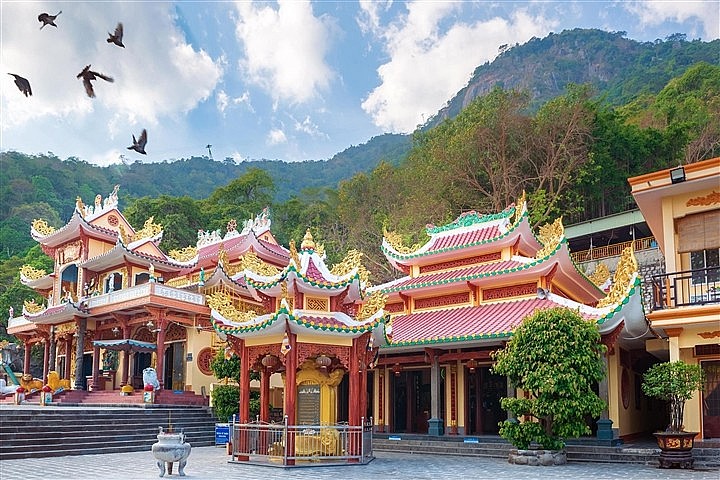 |
| Ba Den’s pagoda complex (Photo: VTC) |
Ba Den mountain
Ba Den mountain, once named Mot mountain, is the highest peak in the south of Vietnam. Ba Den gains its fame for being a sacred spiritual destination in Tay Ninh province, with legends and mysterious stories associated with Ba Den (Black Virgin), who was granted the title of Linh Son Thanh Mau (Mother of the Holy Mountain) by King Gia Long.
Folk says that when Lord Nguyen Anh, who founded Vietnam’s Nguyen Dynasty, was chased into the region, his soldiers were death due to starvation. Nguyen Anh could only ask god for help. That night, the Black Virgin appeared in his dream and guided him to fruit trees in the forest, where his soldiers found something to eat. Years later, the lord came back to the mountain andbuilt a pagoda to worship the god that helped him.
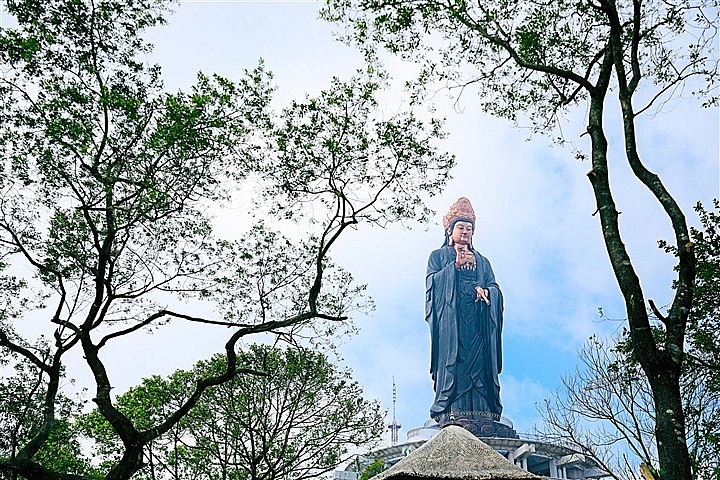 |
| Photo: VTC |
After several reconstructions, the pagoda has become Chua Ba complex, which includes many small pagodas and relics. The complex, which lies 350m from the mountain foot, honors Buddhas and the Black Virgin.
Pilgrims visit the Chua Ba complex every January and on the anniversary of Ba Den’s death (May 5 and 6 of the lunar calendar). Those who come to worship the god can approach the temple by climbing 1500 stone steps using the complex’s modern cable car system. Chua Ba and its Tay Bo Da Son statue achieved Asian records.
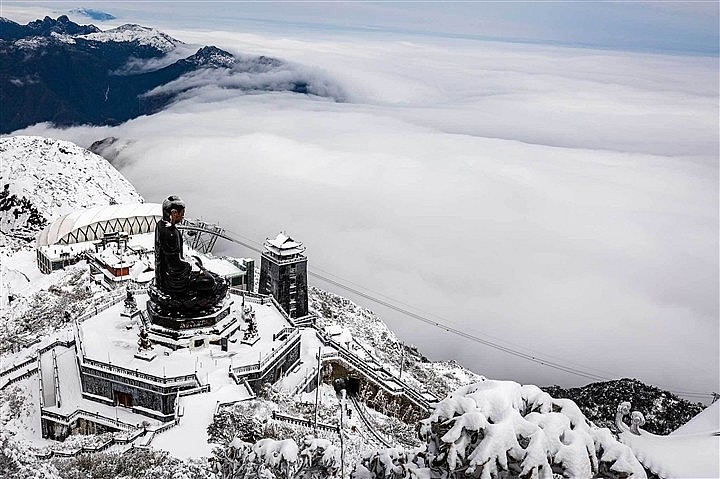 |
| A Buddha statue on Fansipan top. (Photo: VTC) |
“Roof of Indochina” Fansipan
With an altitude of 3143m above sea level, Fansipan is not only the highest mountain in Vietnam but also the “roof” of three Indochina countries. A spiritual complex was built on the top of Fansipan in 2018. The complex consists of 12 buildings, bearing the soul of ancient Vietnamese temples in the North. The most special work is the 21.5m high Amitabha Buddha statue, built from tens of thousands of thin copper plates, holding the record of “The highest bronze Amitabha Buddha statue in Asia”.
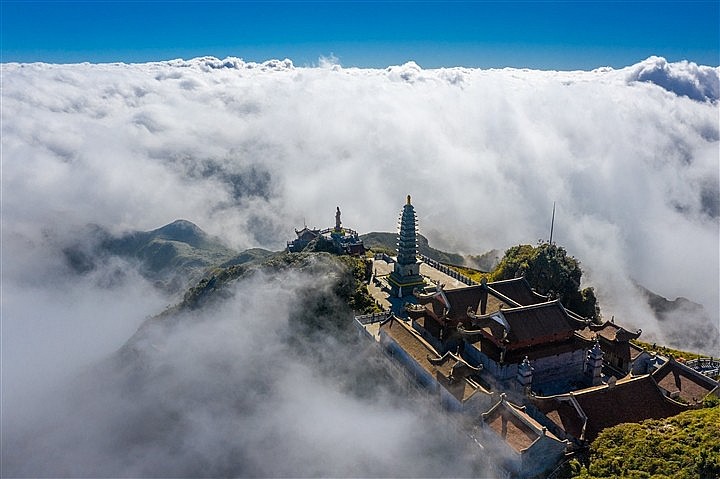 |
| (Photo: VTC) |
Since the spiritual complex was built, Fansipan turns from a spot for only adventurers into a destination for pure meditation, where tourists and Buddhists put aside their sorrows and turn to good intentions.
Most Venerable Thich Duc Thien, Vice President and General Secretary of the Vietnam Buddhist Sangha once said: ‘Fansipan is the highest among thousands of mountains in the majestic Hoang Lien Son range, the great bloodline of the nation, the source of spiritual energy. The spiritual complex, including many pagodas and statues, identifies the magical spiritual realm of Fansipan.’
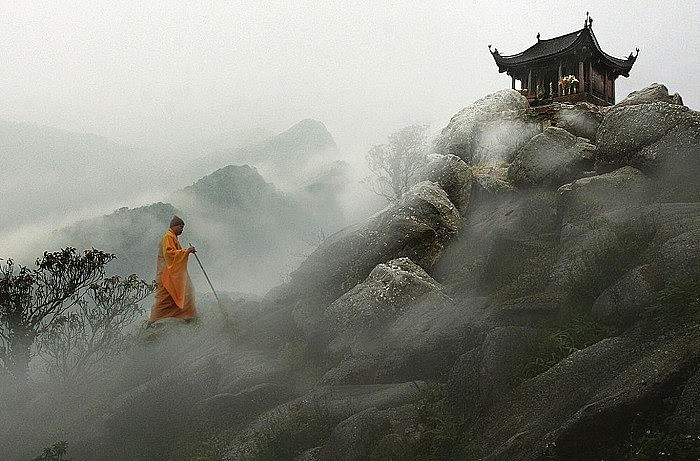 |
| Yen Tu’s peak. (Photo: VTC) |
The holy peak of Yen Tu
Yen Tu peak, where Buddha and King Tran Nhan Tong chose to practice Buddism and founded Trc Lam Zen – the typical Buddhist sect of Vietnam, has become a familiar destination for Buddhist followers nationwide. Due to its history and majestic natural scene, Yen Tu is often called the most sacred mountain in Vietnam.
Visiting Yen Tu is to return to the Buddha land on the high mountains, where mossy pagodas and towers are hidden in the dark bamboo forest. The road from the mountain foot to Yen Tu peak is up to 6000 m long, equivalent to 6 hours of continuous walking, starting from Giai Oan stream, passing Hoa Yen pagoda at an altitude of 543m, then Van Tieu pagoda at an altitude of 700m and finally reach the Bronze pagoda on the top of Yen Tu at 1,068m high.
The bronze pagoda is the most famous temple of Yen Tu sacred peak. The pagoda was built in late Le Dynasty. It was first named Thien Truc pagoda, but through many ups and downs in history, the ancient temple was destroyed. By 2007, Bronze Pagoda was rebuilt with 60 tons of pure red bronze. According to researcher Nguyen Duy Hinh, no other Buddhist temple is made entirely of bronze worldwide.



